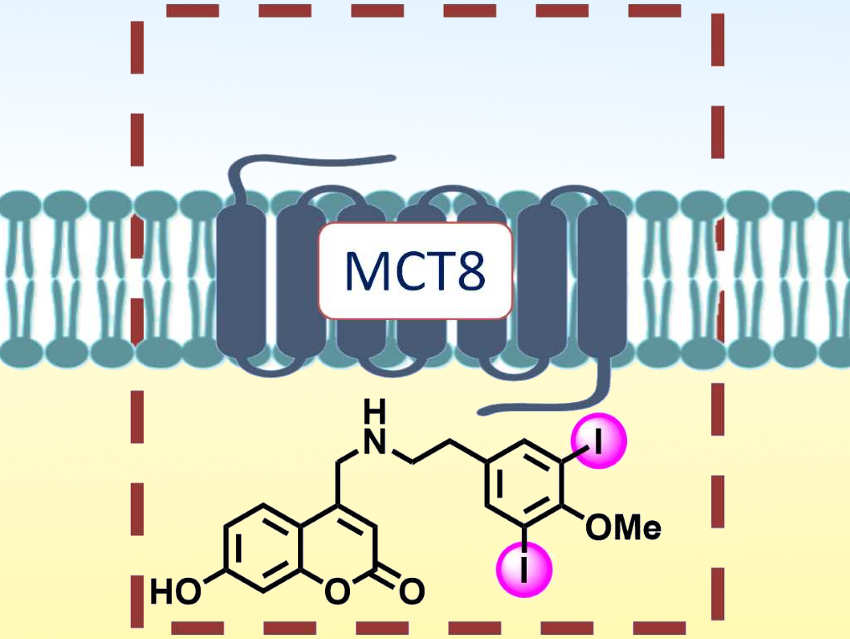The delivery of small molecules into cells is important, e.g., for therapeutic applications. Gaseous molecules such as oxygen and carbon dioxide or uncharged molecules such as water and ethanol can cross the plasma cell membrane by simple passive diffusion. However, larger molecules require specific membrane transporters and channel proteins for cellular delivery.
Govindasamy Mugesh and colleagues, Indian Institute of Science, Bangalore, have studied the transport of small organic molecules across plasma membranes. The team found that the introduction of iodine atoms into a series of fluorescent molecules (example pictured) remarkably enhances the cellular uptake. The process was monitored by observing the fluorescence intensities. Using two iodine atoms, the cellular uptake can be increased to more than 95 % in mammalian cells. The nature of the fluorescent group does not play a major role in the cellular uptake when iodine atoms are present.
The researchers showed that the halogen compounds are transported into the cells by the thyroid hormone-specific monocarboxylate transporter 8 (MCT8). The iodine serves as a recognition unit for the membrane transporter. This study provides a new strategy for enhancing the uptake of organic molecules by mammalian cells, which could be used for studying membrane activity, cellular functions, and drug delivery.
- Halogen-Mediated Membrane Transport: An Efficient Strategy for the Enhancement of Cellular Uptake of Synthetic Molecules,
Harinarayana Ungati, Vijayakumar Govindaraj, Chithra R. Nair, Govindasamy Mugesh,
Chem. Eur. J. 2019.
https://doi.org/10.1002/chem.201806122




